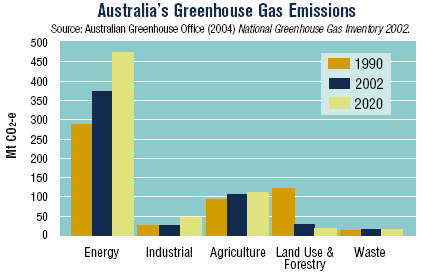|
News & Views item - September 2005 |
![]() The
Practicalities of CO2 Sequestration.
(September 30, 2005)
The
Practicalities of CO2 Sequestration.
(September 30, 2005)
During the period that Robin Batterham was Australia's
part-time Chief Scientist he also served as part-time Chief Technologist for
Last week the United Nations' Intergovernmental Panel on Climate Change released a detailed report on the storage of CO2 underground. Bert Metz, co-chair of the working group that issued the new report, says such storage could hold 80 years' worth of current CO2 emissions. Furthermore the report states it would be safe. It estimates underground carbon retention is "likely" to exceed 99% over 1000 years.
However, Science also states, "[T]he report confirms long-standing worries that the storage option is expensive compared to reducing emissions through increased use of known technologies such as wind power. Metz says a CO2 capture system would cost between 1 and 5 U.S. cents per kilowatt-hour for electricity. 'There are cheaper ways' to reduce carbon emissions, says Metz."
Dr Batterham resigned from the post of Chief Scientist some four months ago and according to the Minister for Education. Science and Training, Brendan Nelson, it will be several months until a replacement is designated.
Currently submissions are being sought for the $500 million Low Emissions Technology Demonstration Fund, "a flagship initiative of the Australian Government's Energy White Paper, Securing Australia's Energy Future, which is designed to support the commercial demonstration of technologies that have the potential to deliver long-term large-scale greenhouse gas emission reductions in the energy sector".
According to the Australian Government's Statement of Challenges and Opportunities and Draft Programme Guidelines, "The Fund will operate over the period 2005–06 to 2019–20, with the first competitive funding round in 2005–06. Subsequent funding rounds in 2008–09 and 2011–12 are anticipated, subject to the outcome of round one. An independent review of the Fund will be undertaken in 2009–10".